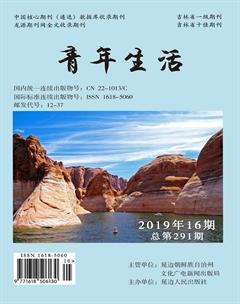Study on Qingzhou Round
王冠楠
【Abstract】:Chinese traditional lacquer art has experienced thousands of years of cultural accumulation, and the quiet and restrained aesthetics are consistent with the ethereal silence of Buddha.
【Key;words】:Buddha;Chinese;lacquer;Qingzhou
I. History of Lacquer
China is the first country in the world to use natural lacquer to make lacquer crafts, the first country to take practicability as purpose, which is reflected in life appliances. After Han Dynasty, the lacquer products gradually disappeared from the folk goods, while the dry lacquer was developed. During Wei-Jin and Northern Southern dynasties and the number of lacquer statues began to increase. After Song and Yuan dynasties, the title of “dry lacquer” was rarely used, and the title of “bodiless” appeared in the middle of the Qing Dynasty. In recent years, the bodiless lacquer has been mostly presented to the world in the form of gifts and works of art.
II. Qingzhou Round-carved Single Buddha Style
During the Han Dynasty, Buddhism was introduced to China from India, and a Buddha art group centered on Qingzhou was formed in the eastern part of China. The single round-carved Buddha is one of the two sculpture forms of Qingzhou Buddha. The single Buddha costumes are diversified and deeply influenced by foreign cultures. There are kasayas with shoulder style, double-necked style and partial right-shoulder style, which have distinctive regional characteristics. Different conch pearl shapes, milk nail shapes, cone shapes, etc. were matched with low round meat topknot. The face of the Buddha's face has a multi-faceted dome with a rounded front, a low cheekbones and a slight squint.
III. Basic Process of Lacquers Three-dimensional Modeling
(1)Preparation of tool and material:
The lacquer as the painting, its color has connotation and mystery, with strong oriental aesthetic characteristics, the shape can not be separated from the fetal bone, such as jade, wooden tires, pottery, etc., painted on it, processed into a paint product. The lacquer art is decorative, and the materials used are not only Chinese lacquers, but also gold and silver, shells, chicken and duck eggshells, etc.
(2)Dynamic analysis
When the gesture of the Buddha statue is determined, it will be carefully analyzed. Generally, the statue can be divided into two parts: immobile and movable. The non-moving parts are three bulks and limbs of the Buddha statue, and the movable part are the neck, the waist and the joints.
(3)Build a skeleton
The material for building the skeleton can be made of wood, with aluminum wire, nails and straw ropes. It can also be welded with angle iron, steel bars and steel net. Human body dynamics, center of gravity, proportion, and structural points must be accurately reflected.
(4)Add mud
Start from the chest or pelvis of the torso, while shaping the torso, add the mud to the legs and the head, and finally add to the arms and the base.
(5)Deep engraving
After the production of the previous stage is completed, he following is an in-depth characterization stage. In-depth is to fully express the object with a real body language. How to go deeper? It can be understood from two aspects. One is to take the method of "addition and subtraction", and the other is to "add and subtract".
(6)Gypsum molding
First of all, use the insert to divide the Buddha statue into six parts, the body has two parts, and the hands have four parts. Second, apply a layer of parting agent to the Buddha's mud. Third, the gypsum is prepared. After the first time, the gypsum is slightly solidified, and it is followed by the gypsum of the second time. The gypsum of the second time should be properly thickened and smeared to be dense and uniform. Then add hemp to make it a whole. Finally, it is reinforced with wood to make the mold less susceptible to damage and deformation. After it is completely solidified, the mold is divided, and then the mud is poured out, and the gypsum mold is completed.
(7)After the original shape is prepared, apply soapy water.
Apply soapy water to the inner gypsum exterior of the Buddha statue. The second application of soapy water should be applied on the basis of totally dry condition of the first application of the soapy water.
(8)Paint mud once. (raw lacquer + clay)
(9)Painting ash of three times (fine ash, medium ash, coarse ash) blend the raw lacquer and grey-tile ash into paste, and use the rubber slab to scrape the inner gypsum exterior.
(10) Mount the ramie of about four layers. The thickness of the mounting is determined according to the size and needs of the styling.
(11) After each mounting, shave the paint once mud and fill in the ramie mesh.
(12) Painting ash three times (coarse ash, medium ash, fine ash)
(13) Paint mud twice. (14) Fix raw lacquer. (15) Polishing and shaping. (16) Bodiless type. (17) Painting.(18) Painted and decorated.
IV.Summary of Chapter
The lacquer art is closely connected with the Buddha statue, and it is the core of the oriental art. Through continuous experiments, the effect of mutual fusion of the combination of lacquer and Buddha statues can be reached and achieved. The combination of Chinese lacquer craft and Buddha statues is not only the demand for advancement of two art forms. The development of lacquer Buddha statues is an excellent expression of art diversity in the modern era. It is a brave attempt and innovation on art and the impetus of the artists' creative development and sublimation.
Reference:
[1]WANG Weihua Study on Buddha Statue Molding in Longxing Temple, Qingzhou Fine Arts. P104~109
[2]YU Bing Deep Exploration and Development of Study on Buddha Statues in Longxing Temple, Qingzhou, Shandong]Roots Seeking P107~111

